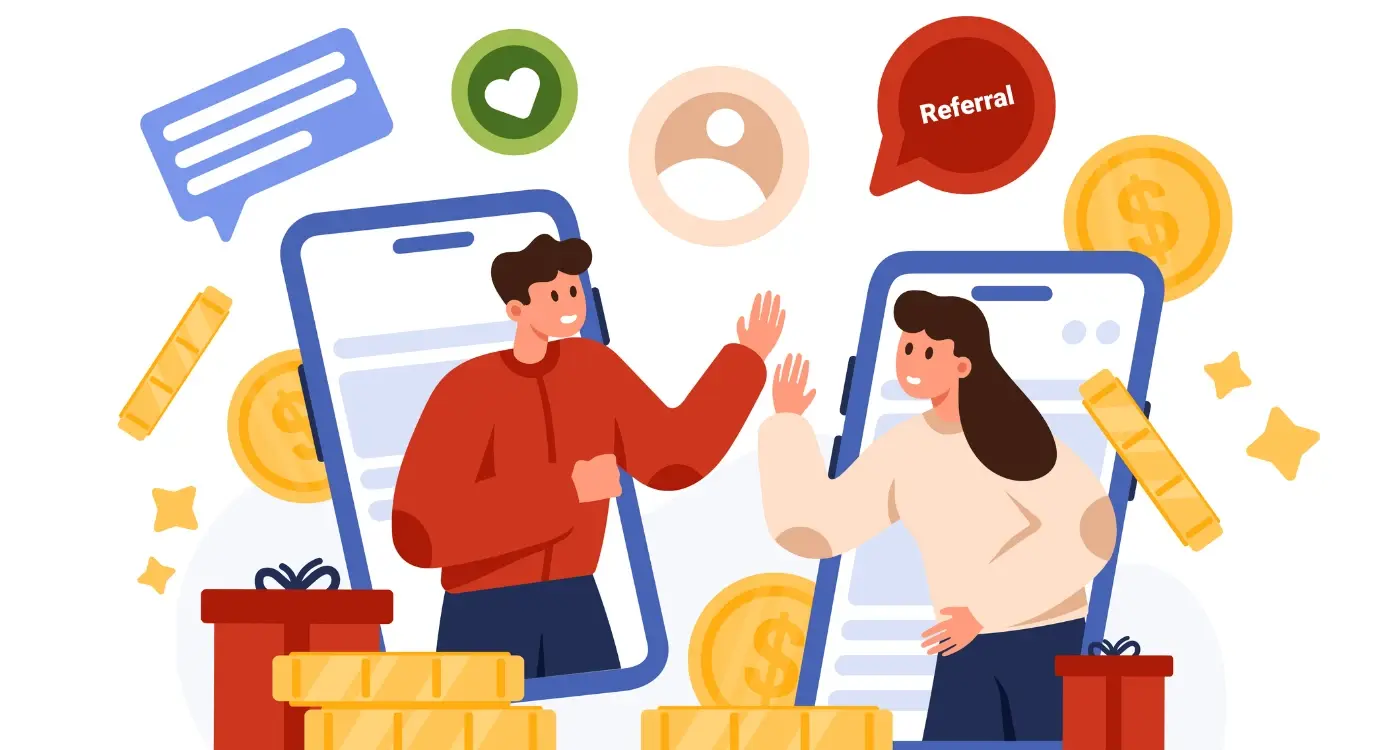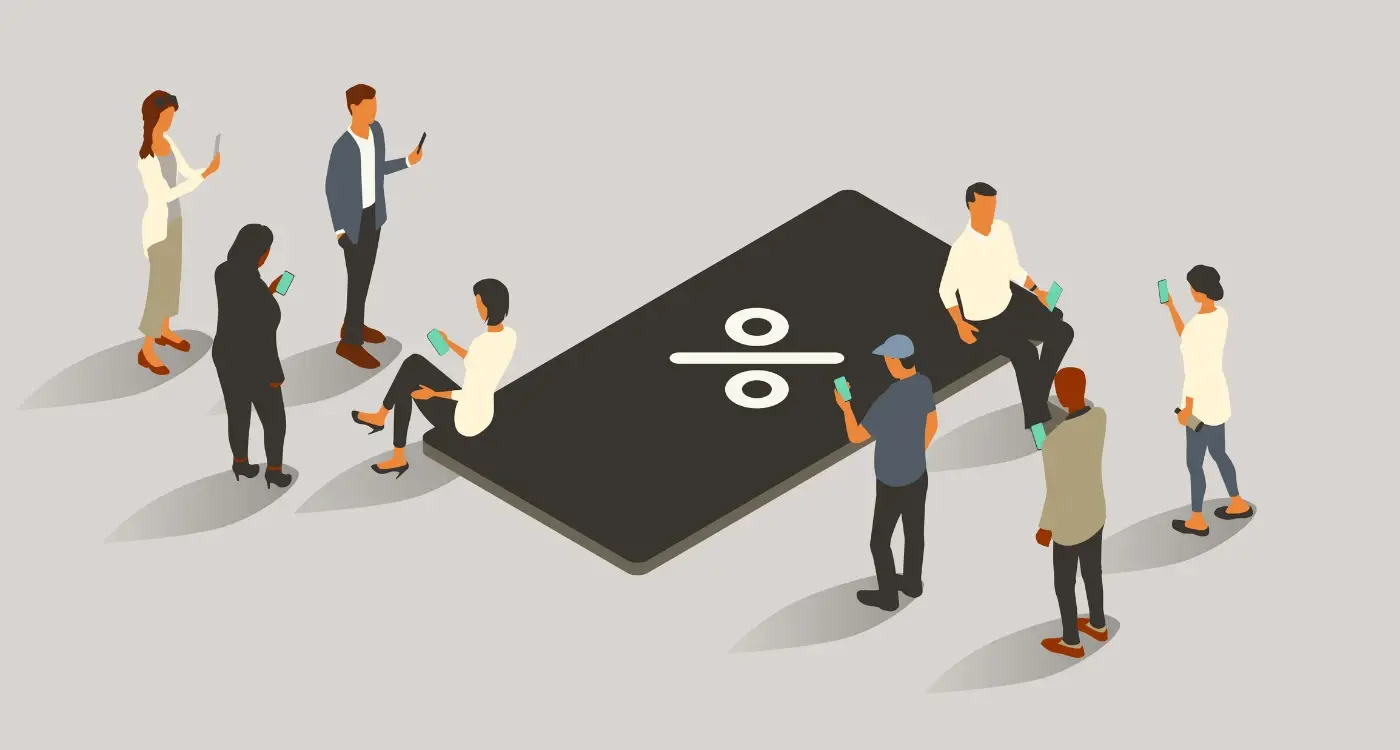How Do I Create A Referral Program For My Mobile App?
The most successful mobile apps don't just acquire users—they turn existing users into their most powerful marketing force. Referral programs have become the secret weapon for growth marketing, with some apps seeing user acquisition costs drop by up to 70% when implemented correctly. That's the power of word-of-mouth marketing in the digital age.
Building a referral program isn't just about adding a "share" button to your app and hoping for the best. It requires careful planning, the right incentives, and a seamless user experience that makes sharing feel natural rather than forced. The apps that get this right see explosive growth; those that don't often waste valuable resources on programs that nobody uses.
A well-designed referral program doesn't just bring in new users—it strengthens the relationship with existing ones by giving them a reason to actively promote your app
Throughout this guide, we'll walk through everything you need to know to create a referral program that actually works. From understanding the psychology behind why people share apps to building the technical infrastructure that supports seamless referrals, we'll cover the complete process. By the end, you'll have a clear roadmap for turning your existing users into your most effective user acquisition channel.
What Is a Referral Program and Why Does Your Mobile App Need One
A referral program is a way to turn your existing users into your marketing team. When someone enjoys using your app, they can recommend it to their friends and family—and you reward them for doing so. The person making the recommendation gets something (maybe credits, discounts, or premium features) and often the new user gets a welcome bonus too.
Think of it like this: your mate tells you about a brilliant new food delivery app and gives you a code for £5 off your first order. You download it, use the code, and your mate gets £5 credit too. Everyone wins, and that's exactly how referral programs work.
Why Your App Needs One
Getting new users is expensive. Really expensive. App store ads, social media campaigns, influencer partnerships—they all cost money and there's no guarantee they'll work. But when someone you trust recommends an app, you're much more likely to try it. That personal recommendation is worth its weight in gold.
Referral programs also help you keep existing users engaged. When people have a reason to share your app, they're thinking about it more often. They're more invested in your success because they benefit from it too. Plus, users who come through referrals tend to stick around longer than those who find you through other channels.
Planning Your Referral Program Strategy
Before jumping into building your referral program, you need to think about what you want to achieve. Are you looking to boost downloads? Increase user engagement? Drive more revenue? Your goals will shape every decision you make—from the rewards you offer to how you promote the program.
Start by identifying your ideal users. Who are the people most likely to refer others? In my experience, these are usually your most engaged users who already love your mobile app. They're the ones leaving positive reviews and using your app regularly. These power users become your referral champions, so design your program with them in mind.
Setting Clear Goals
Define what success looks like for your user acquisition efforts. Maybe you want 20% of new users to come through referrals within six months. Or perhaps you're targeting a specific cost per acquisition that's lower than paid advertising. Having concrete numbers helps you measure whether your growth marketing strategy is working.
Understanding Your Users
Consider when users are most likely to refer others. This usually happens right after they've had a positive experience with your app—completed a purchase, reached a milestone, or discovered a feature they love. Timing your referral prompts around these moments dramatically improves your chances of getting shares.
Map out your user journey and identify the "wow moments" where people are most excited about your app. These are prime opportunities to ask for referrals.
Choosing the Right Rewards and Incentives
Getting your rewards right can make or break your referral programme—I've seen brilliant apps fail because they offered the wrong incentives. The key is understanding what your users actually want, not what you think they want. Some people assume cash is king, but that's not always true; sometimes exclusive features or premium subscriptions work better than money.
Understanding Your User's Motivation
Your rewards need to match your app's purpose and your users' behaviour. If you're running a food delivery app, discounts on future orders make perfect sense. But if you've built a productivity app, premium features or extended free trials might be more appealing. The reward should feel natural—something users would genuinely want to earn and use.
Balancing Value and Sustainability
Here's where many apps stumble: they either offer rewards so generous they go bankrupt, or so stingy nobody bothers participating. You need to find that sweet spot where the reward feels worthwhile but doesn't destroy your profit margins. I usually recommend starting with smaller rewards and increasing them based on performance data. Double-sided rewards work well too—give something to both the referrer and the new user. This creates a win-win situation that feels fair to everyone involved.
Remember, the best reward is one that encourages long-term engagement, not just a quick sign-up.
Building the Technical Foundation
Right, let's get into the nuts and bolts of making your referral program actually work. The technical side might seem daunting, but it's really just about connecting a few key pieces together—think of it as the plumbing behind your mobile app's user acquisition engine.
Tracking and Attribution Systems
Your referral program needs to know who referred whom, and that's where tracking comes in. You'll need unique referral codes or links for each user, which is straightforward enough. Most developers use either custom-built systems or third-party solutions like Branch, Firebase Dynamic Links, or ReferralCandy. The key is making sure you can follow the journey from referral link click to app download to actual signup.
Database and Reward Management
Behind the scenes, you're storing loads of data—user relationships, reward balances, referral status, and payout history. Your database structure needs to handle this efficiently whilst keeping everything secure. I've seen too many apps crash under the weight of their own success because they didn't plan for scale.
The best referral systems are invisible to users but bulletproof behind the scenes
Don't forget about reward fulfilment; whether that's in-app credits, cash payments, or physical goods, you need automated systems that can handle distribution without manual intervention. Your growth marketing efforts will thank you when everything runs smoothly.
Designing a User-Friendly Referral Experience
After years of building mobile apps, I've learned that even the best referral rewards mean nothing if people can't figure out how to use them. Your referral system needs to be so simple that users don't need to think about it—they just do it naturally.
The referral flow should feel like part of your app, not an awkward add-on. I always tell clients to put the referral option somewhere obvious but not annoying. A dedicated tab in your navigation works well, or a subtle prompt after users complete a positive action like making a purchase or finishing a level.
Keep the Process Simple
Your referral process should have three steps maximum: share, friend downloads, both get rewards. That's it. Don't make people jump through hoops or fill out lengthy forms. The sharing mechanism should work with apps people already use—WhatsApp, social media, or just copying a link.
Make Progress Clear
Users need to see what's happening with their referrals. Build a simple dashboard that shows:
- How many friends they've invited
- Which friends have joined
- Rewards earned and pending
- Next reward milestones
Remember, if people can't easily track their progress, they'll lose interest quickly. Keep everything visible and celebrate their wins along the way.
Launching and Promoting Your Referral Program
Right, you've built your referral program and it's looking good—but now comes the bit that separates successful mobile app user acquisition from the programs that quietly fade into obscurity. Getting people to actually use your referral system requires proper promotion and smart timing.
Launch timing matters more than you might think. Don't just flip a switch and hope for the best; introduce your referral program when users are most engaged. That sweet spot is usually after they've had a positive experience with your app—maybe they've just completed a purchase, finished a level, or achieved something meaningful. This is when they're most likely to want to share your app with friends.
Key Promotion Channels
- In-app notifications and banners
- Email campaigns to existing users
- Social media posts and stories
- Push notifications (use sparingly!)
- App store updates and release notes
Your growth marketing strategy should treat the referral program like a product feature, not an afterthought. Create clear messaging that explains the benefits without being pushy. Users need to understand what they get and how easy it is to share—confusion kills conversion rates faster than anything else.
Start with a soft launch to a small group of your most engaged users. Their feedback will help you iron out any issues before rolling out to your entire user base.
Remember, promotion isn't a one-time thing. Keep your referral program visible through regular reminders and strategic placement within your app's user journey.
Measuring Success and Optimising Performance
Right, so you've built your referral program and launched it to the world—now what? Well, this is where the real work begins. You need to track how well it's performing and make changes based on what the data tells you. I've seen too many apps launch referral programs and then just hope for the best; that's not going to cut it.
Key Metrics to Track
There are several metrics you should be monitoring closely. Your referral rate shows how many users are actually sharing your app—if this is low, your incentives might not be compelling enough. Conversion rate tells you how many people who receive referrals actually download and use your app. User lifetime value of referred users is often higher than regular users, so track this separately.
- Referral rate (percentage of users who refer others)
- Conversion rate (referrals that become active users)
- Cost per acquisition through referrals
- Retention rate of referred users
- Revenue generated from referral program
Making Data-Driven Improvements
Once you have data flowing in, start testing different elements. Maybe your reward isn't attractive enough, or perhaps the sharing process is too complicated. A/B test different reward amounts, change the messaging, or simplify the user journey. Small tweaks can make a massive difference to your program's success—I've seen conversion rates double just by changing the reward structure.
If you're working with a tight budget, consider how your referral program compares to other marketing channels that deliver good ROI. Sometimes the most effective user acquisition strategies are the ones that cost the least but take more time to build properly.
Conclusion
Building a successful referral program for your mobile app isn't rocket science, but it does require careful planning and execution. I've seen countless apps launch referral programs that fall flat because they rushed the process or didn't think through the user experience properly. The apps that succeed are the ones that take time to understand their users, pick the right rewards, and make sharing feel natural rather than forced.
Your referral program should feel like a natural extension of your app—not something bolted on as an afterthought. The best programs I've worked on are those where referring friends feels like you're doing them a favour, not just chasing a reward. When users genuinely love your app, they'll want to share it anyway; your job is to make that sharing process as smooth as possible whilst giving them a little thank you along the way.
Remember that user acquisition through referrals is a marathon, not a sprint. You won't see explosive growth overnight, but what you will build is something far more valuable: a loyal user base that actively promotes your app. This kind of organic growth marketing is gold dust in today's competitive app market. Start small, test everything, and keep refining based on what your users actually do rather than what you think they'll do.
Share this
Subscribe To Our Learning Centre
You May Also Like
These Related Guides

What's the Difference Between Referral Programs and Affiliate Marketing for Apps?

How Do I Track And Measure My App Referral Program Success?



